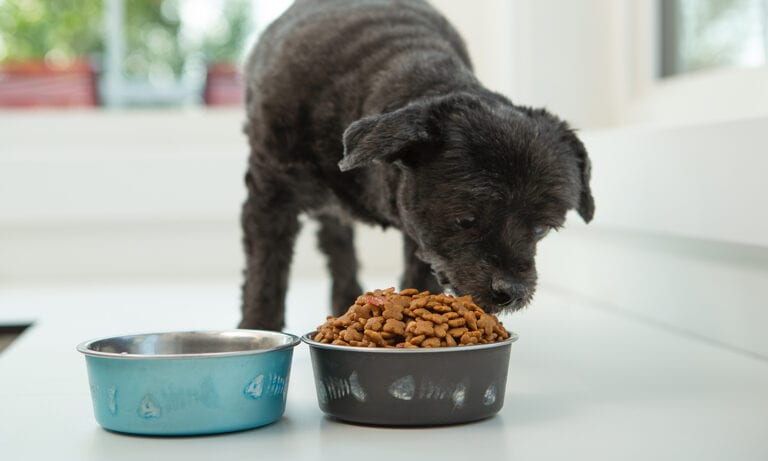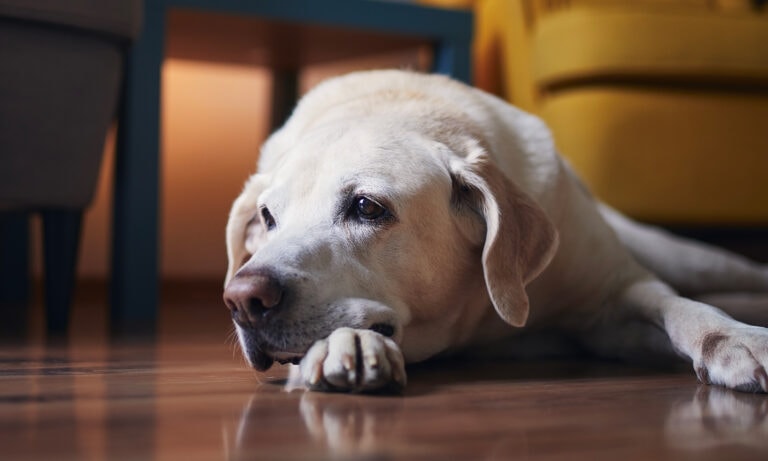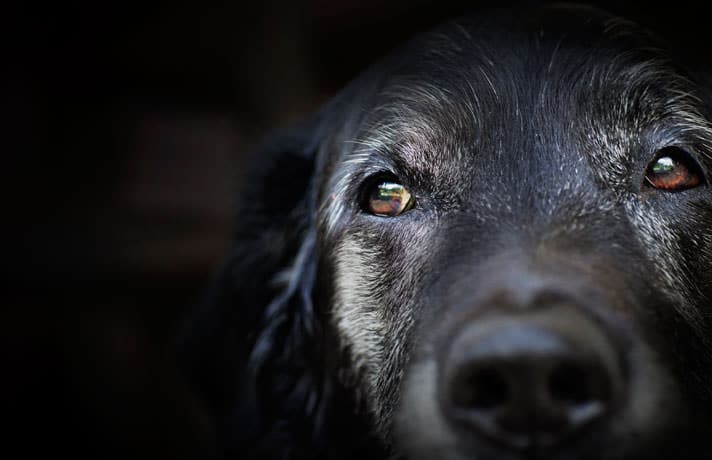Old age can catch anyone off guard. Although pets age at a much faster rate than humans, signs of aging in dogs can occur at such a gradual rate that the day-to-day differences can be hard to spot.
While the natural, slow progression of symptoms can alert us to our dog’s changing needs, it’s important to understand that different dog breeds enter their senior years at different points in life. Typically, large breed dogs can be considered senior dogs as early as age 5, while small breed dogs enter their golden years around the age of 10.
Learn when your dog will enter their senior years.
Telltale Signs of Old Age in Dogs
According to Dr. Sarah Nold, DVM at Trupanion, “Some dogs show signs of aging sooner than others, which can be influenced by the size of the breed. Some of the first signs most people notice are graying of the muzzle and moving more slowly or stiffly around the house and on walks. [A dog’s] eyes can become cloudy,” and you may notice your dog losing weight. “Keep in mind, just because these are common [signs] in older dogs, doesn’t mean they should be ignored,” Dr. Nold says.
How to Slow the Signs of Aging in Senior Dogs
-
Well-balanced diet.
For starters, providing your senior dog with a balanced diet can be a critical component in ensuring your pup is getting the proper nutrients for a healthy lifestyle at any age. CANIDAE Grain-Free PURE Meadow Senior Formula is a simple, limited ingredient diet option for old dogs, especially pups with sensitive tummies.
-
Supplements.
“Many dogs may benefit from a joint supplement.” The Nutramax Cosequin Maximum Strength With MSM is a great choice to help maintain an old dog’s optimal joint function. For an added boost in your pooch’s wellness regimen, try incorporating the VetriScience Canine Plus Senior Multivitamin into their daily routine. These tasty treats offer vital nutrients, vitamins, minerals and essential fatty acids to keep your pooch looking and feeling their best.
-
Exercise.
In addition to providing your four-legged best friend with a solid base of nutrition to keep them happy and healthy, “It’s always good to keep your dog active as much as possible,” Dr. Nold says. “This not only can help with stiffness, but helps to keep [your dog] at an ideal weight, which may slow the progression of arthritis.” Keeping your furry best friend active is important because it keeps their muscles and joints moving on a regular basis. “[Increased] difficulty with mobility is often a big challenge for pet owners as their dogs get older,” Dr. Nold says. “It may make the dog less willing to go on walks, go upstairs or jump into the car. Some even become less interested in getting up to eat or drink.”
Accommodating Your Aging Pet
With old age and the potential of increasing difficulty in your dog’s mobility, it’s important to make sure they are comfortable. The K&H Pet Products Superior Orthopedic Pet Bed helps keep your pooch comfy and cozy in any space around your home. Made from 5 inches of medical-grade orthopedic foam, this dog bed gently cushions pressure points like shoulders and hips to give senior dogs suffering from arthritis a little extra support while lying down.
Along with decreased mobility, senior dogs may experience incontinence, even if they were previously house-trained. Some old dogs may feel embarrassed or guilty for having accidents in the house, so it’s important to provide your pooch with a safe space to accommodate their changing needs. Frisco Training & Potty Pads are a simple and easy solution to save your home from accidents while giving your pet a designated area to do their business in case they can’t make it outdoors.
So, while slowing down is typically considered a natural sign of aging, it’s important to provide old dogs with the extra compassion and understanding they deserve in their golden years. “Decreased vision may cause [your dog] to bump into things in low light, and decreased hearing may cause him to startle easier. Dog dementia may cause your older dog to not deal as well with changes in routine or being alone,” Dr. Nold says.
To keep your pooch happy, healthy and stimulated, try taking part in their favorite activities to keep their mind active. Practice their best tricks or engage them with their favorite toys, even if the play is more delicate or for a shorter period of time. Remember, our pets do not always display signs of discomfort or pain in ways that we may expect, and a transition into old age can be hard on our pets. Consistently approach your dog with a positive attitude and plenty of praise for always being by your side. This includes lots of delicious and healthy treats, like Greenies Aging Care Regular Dental Dog Treats—a smart treat that will keep your pooch’s teeth clean while supporting a lifetime of healthy joints.

Dominika is a Chicago native who graduated from DePaul University with a bachelor’s degree in English. Having nearly a decade of combined experience in the fields of marketing, journalism, UX and social, she thrives in the fast-paced and ever-changing world of digital media. When she is not working, Dominika can be found at the beach, traveling the world or cuddling her female Rottie named Ezra.
Share:















